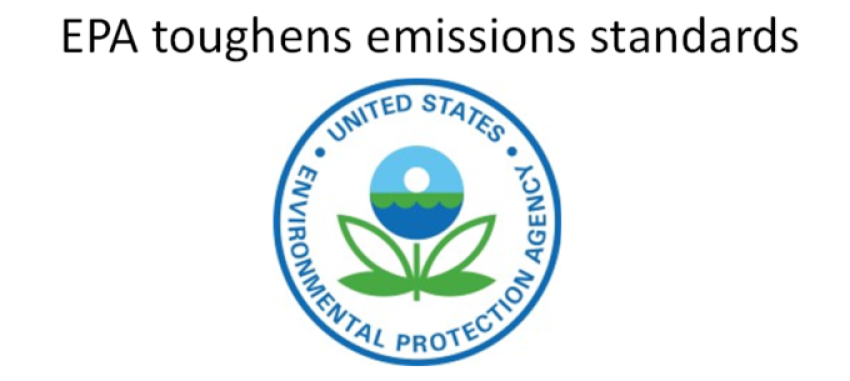
The US Environmental Protection Agency (EPA) has announced new proposed federal vehicle emissions standards to accelerate the transition to less polluting vehicles as part of efforts to tackle the climate crisis.
The proposals are likely to further stimulate the demand for energy transition metals in the country, such as lithium, nickel, cobalt and graphite for lithium-ion batteries for electric vehicles (EVs), in addition to copper to increase EV charging infrastructure.
The proposals would avoid nearly 10Bt of CO2 emissions, equivalent to more than twice the total US CO2 emissions in 2022, while saving thousands of dollars over the lives of the vehicles meeting these new standards and reducing America's reliance on about 20B barrels of oil imports. The EPA also said there would be considerable health benefits through lowering pollution and particulate emissions.
"By proposing the most ambitious pollution standards ever for cars and trucks, we are delivering on the Biden-Harris Administration's promise to protect people and the planet, securing critical reductions in dangerous air and climate pollution and ensuring significant economic benefits like lower fuel and maintenance costs for families," said EPA Administrator Michael Regan.
The regulations are "the single most important regulatory initiative by the Biden administration ... to really reduce the worst impacts of climate change," said former EPA official and the chair of the board of the International Council on Clean Transportation Margo Oge.
EVs charging ahead
The EPA said the ambitious standards are achievable thanks to president Joe Biden's Investing in America agenda, resulting in more American-made EVs. Since President Biden took office in 2021, EV sales in the USA have tripled while the number of available models has doubled.
There are over 130,000 public chargers nationwide, a 40% increase over 2020. The private sector has also committed more than US$120B in domestic EV and battery investments since president Biden signed the Inflation Reduction Act into law last year.
“This is a great result for the sector and should bring forward EV demand ahead of when we expected it to kick in. From a policy standpoint, it’s very interesting. Having adopted similar policies to China with regards to supply chain development on the IRA, the US is now adopting similar policies to Europe (regulatory approach vs subsidies) on the demand side of the equation!,†Matt Fernley of Battery Metals Review told Skarn Bulletin.
"The development of the US EV market is nothing short of remarkable. It is the fastest growing market n the world, which has gone from nothing to 20% in just 2.5 years," Ana Cabral-Gardner, chair of Sigma Lithium, the world's newest lithium producer from its Grota do Cirilo projection Minas Gerais, Brazil, told Skarn Bulletin.
"With it being widely known that the main barrier to a successful energy transition by 2050 is the availability of the metals themselves, moving the target ahead by 20 years really puts the pressure on the mining industry, for increased production and bringing new mines online. To do this, the industry needs a metal price increase to incentivise new mines, for copper prices of at least $4.50/lb, investors need to financially support the development of new mines, and the US permitting offices need to greenlight new mines," George Ogilvie, CEO of Arizona Sonoran Copper told Skarn Bulletin.
The EPA proposal should be another strong message to investors that the transition to EVs is only going to accelerate. A year or so ago, a lot of forecasts had global EV sales reaching 30% of market by 2030 with the US being the laggard. Today's EPA announcement could require US EV sales of 60%+ of market by 2032, just nine years from now. It underscores just how much lithium, nickel cobalt, graphite we're going to need, Mark Selby, CEO of Canada Nickel told Skarn Bulletin.
"Even on the previous US government timelines for the EV phase-in, the key bottleneck was always going to be the supply of critical minerals. With these greatly accelerated timelines, the race to secure the critical minerals needs to be run at insanely fast-pace. Frankly, it's not feasible to see the mining industry responding with anything approaching the new productive capacity to meet this new timeline. This only ramps up the pressure on Western governments and automakers to make huge upstream investments in new mining capacity, to the tune of tens if not hundreds of billions of dollars over the next decade," Martin Turenne, CEO of FPX Nickel told Skarn Bulletin.
"If these projections prove correct, or even close to correct, and meeting the new EPA standard means that two out of every three new vehicles sold in the US will be EVs by 2032, the demand for graphite and the other critical minerals required for EV batteries is going to spike even higher," Anthony Huston, CEO of Graphite One told Skarn Bulletin.
"[The EPA announcement, and the reactions you're seeing in terms of M&A are very much about the green economy. Investors are coming around to the fact that security of supply of metals is of paramount importance, particularly on critical metals," David Strang, CEO of Ero Copper told Skarn Bulletin.
Proposed standards
The proposed emissions standards, open for public comment, for light-medium and heavy-duty vehicles for the model year 2027 and beyond, would significantly reduce climate and other harmful air pollution, with the proposed standards also lowering maintenance costs and delivering fuel savings for drivers. By accelerating the adoption of technologies that reduce fuel and maintenance costs alongside pollution, the proposed standards would save the average consumer $12,000 over the lifetime of a light-duty vehicle, said the EPA.
The new standards would require just 82 grams/mile, on average, across an automotive company's production by the model year 2032, a 56% reduction from the 2026 target. It is expected to avoid 7.3Bt of CO2 emissions through 2055, and drive the widespread use of filters to reduce gasoline particulate matter emissions and spur EV usage.
To achieve this, the EPA projects that EVs could account for 67% of new light-duty vehicle sales and 46% of new medium-duty vehicle sales in 2032. Ford has plans to produce 600,000 EVs annually by the end of 2023, a tenfold jump from the 61,575 sold in 2022, reported NPR. General Motors aims for more aggressive growth and seeks to produce one million annually by 2025, up from 39,096 in 2022.
New federal tax credits are due soon to help American consumers save up to $7,500 on an EV. To qualify, the cars' batteries and components must come from the US or countries with which it has a free-trade agreement, such as Japan and South Korea.
The EPA also announced greenhouse phase 3 gas standards for heavy-duty vehicles for heavy-duty vocational vehicles such as delivery trucks, school buses and trucks used to haul freight. The proposal is projected to avoid 1.8Bt of CO2 through 2055.
MORE FROM SKARN

About Us
Skarn Associates is the market leader in quantifying and benchmarking asset-level greenhouse gas emissions, energy intensity, and water use across the mining sector.
